�
MechanicalEngineeringSeriesFrederickF.LingEditor-in-ChiefTheMechanicalEngineeringSeriesfeaturesgraduatetextsandresearchmonographstoaddresstheneedforinformationincontemporarymechanicalengineering,includingareasofconcentrationofappliedmechanics,biomechanics,computa-tionalmechanics,dynamicalsystemsandcontrol,energetics,mechanicsofmaterials,processing,productionsystems,thermalscience,andtribology.AdvisoryBoard/SeriesEditorsAppliedMechanicsF.A.LeckieUniversityofCalifornia,SantaBarbaraD.GrossTechnicalUniversityofDarmstadtBiomechanicsV.C.MowColumbiaUniversityComputationalMechanicsH.T.YangUniversityofCalifornia,SantaBarbaraDynamicSystemsandControl/MechatronicsD.BryantUniversityofTexasatAustinEnergeticsJ.R.WeltyUniversityofOregon,EugeneMechanicsofMaterialsI.FinnieUniversityofCalifornia,BerkeleyProcessingK.K.WangCornellUniversityProductionSystemsG.-A.KlutkeTexasA&MUniversityThermalScienceA.E.BerglesRensselaerPolytechnicInstituteTribologyW.O.WinerGeorgiaInstituteofTechnologyForfurthervolumes:http://www.springer.com/series/1161
�
Second Edition
RajeshRajamaniVehicleDynamicsandControl�
Dr.RajeshRajamaniDepartmentofMechanicalEngineeringUniversityofMinnesotaMinneapolis,MN55455,USArajamani@me.umn.eduISSN0941-5122e-ISSN2192-063XISBN978-1-4614-1432-2e-ISBN978-1-4614-1433-9DOI10.1007/978-1-4614-1433-9SpringerNewYorkDordrechtHeidelbergLondonLibraryofCongressControlNumber:2011940692#Allrightsreserved.Thisworkmaynotbetranslatedorcopiedinwholeorinpartwithoutthewrittenpermissionofthepublisher(SpringerScience+BusinessMedia,LLC,233SpringStreet,NewYork,NY10013,USA),exceptforbriefexcerptsinconnectionwithreviewsorscholarlyanalysis.Useinconnectionwithanyformofinformationstorageandretrieval,electronicadaptation,computersoftware,orbysimilarordissimilarmethodologynowknownorhereafterdevelopedisforbidden.Theuseinthispublicationoftradenames,trademarks,servicemarks,andsimilarterms,eveniftheyarenotidentifiedassuch,isnottobetakenasanexpressionofopinionastowhetherornottheyaresubjecttoproprietaryrights.Printedonacid-freepaperSpringerispartofSpringerScienceþBusinessMedia(www.springer.com)RajeshRajamani2012�
For Priya
�
�
Preface As a research advisor to graduate students working on automotive projects, I have frequently felt the need for a textbook that summarizes common vehicle control systems and the dynamic models used in the development of these control systems. While a few different textbooks on ground vehicle dynamics are already available in the market, they do not satisfy all the needs of a control systems engineer. A controls engineer needs models that are both simple enough to use for control system design but at the same time rich enough to capture all the essential features of the dynamics. This book attempts to present such models and actual automotive control systems from literature developed using these models. The control system applications covered in the book include cruise control, adaptive cruise control, anti-lock brake systems, automated lane keeping, automated highway systems, yaw stability control, engine control, passive, active and semi-active suspensions, tire-road friction coefficient estimation, rollover prevention, and hybrid electric vehicles. A special effort has been made to explain the several different tire models commonly used in literature and to interpret them physically. In the second edition, the topics of roll dynamics, rollover prevention and hybrid electric vehicles have been added as Chapters 15 and 16 of the book. Chapter 8 on electronic stability control has been significantly enhanced. As the worldwide use of automobiles increases rapidly, it has become ever more important to develop vehicles that optimize the use of highway and fuel resources, provide safe and comfortable transportation and at the same time have minimal impact on the environment. To meet these diverse and often conflicting requirements, automobiles are increasingly relying on electromechanical systems that employ sensors, actuators and feedback control. It is hoped that this textbook will serve as a useful resource to researchers who work on the development of such control systems, both in vii�
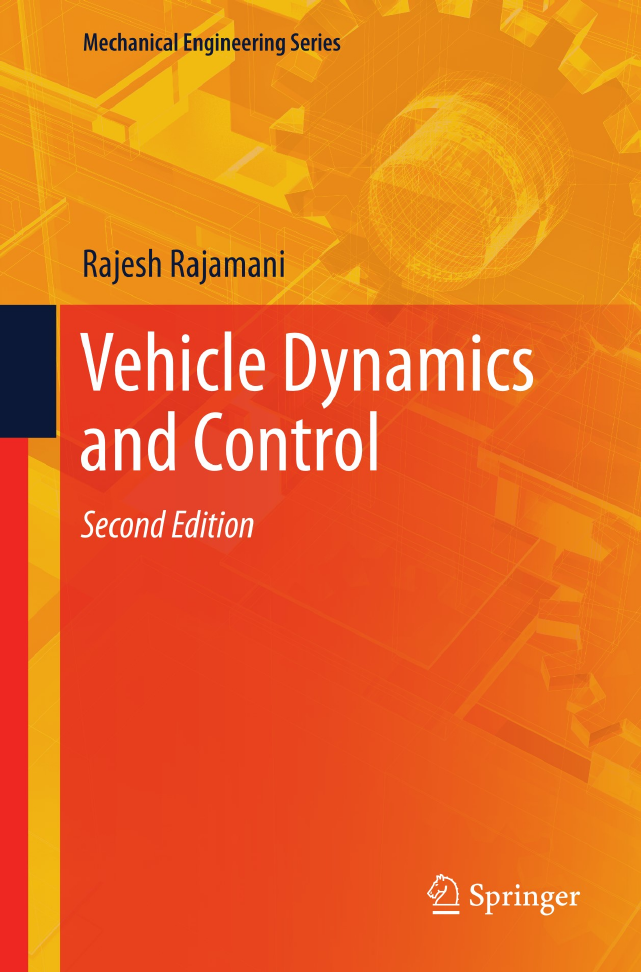
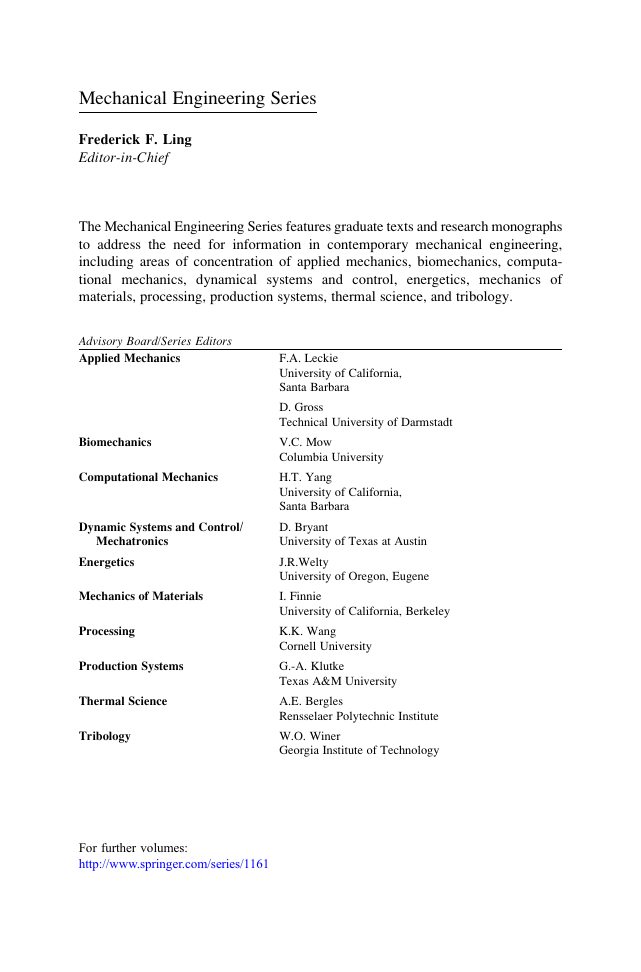

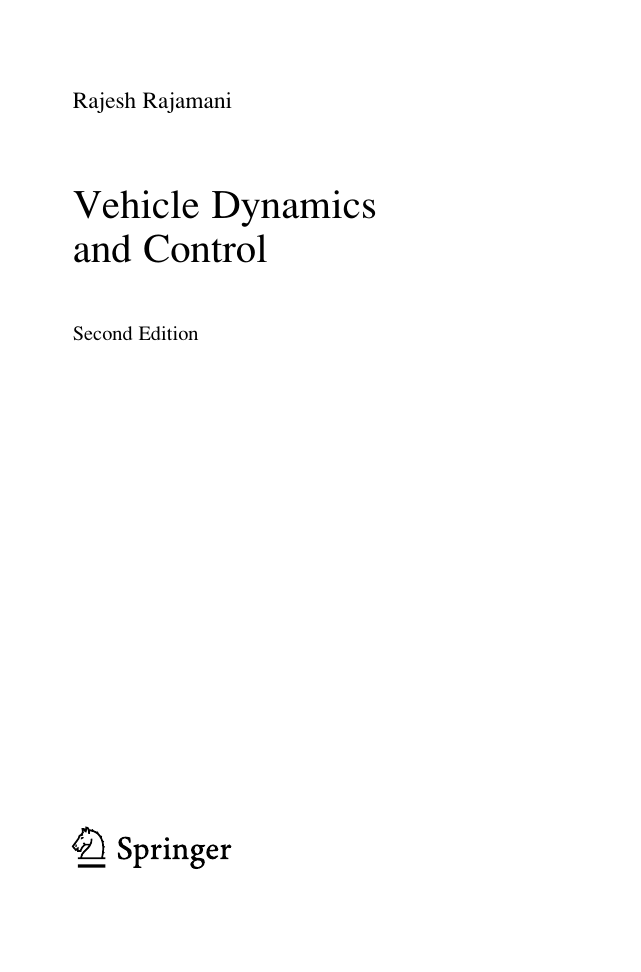
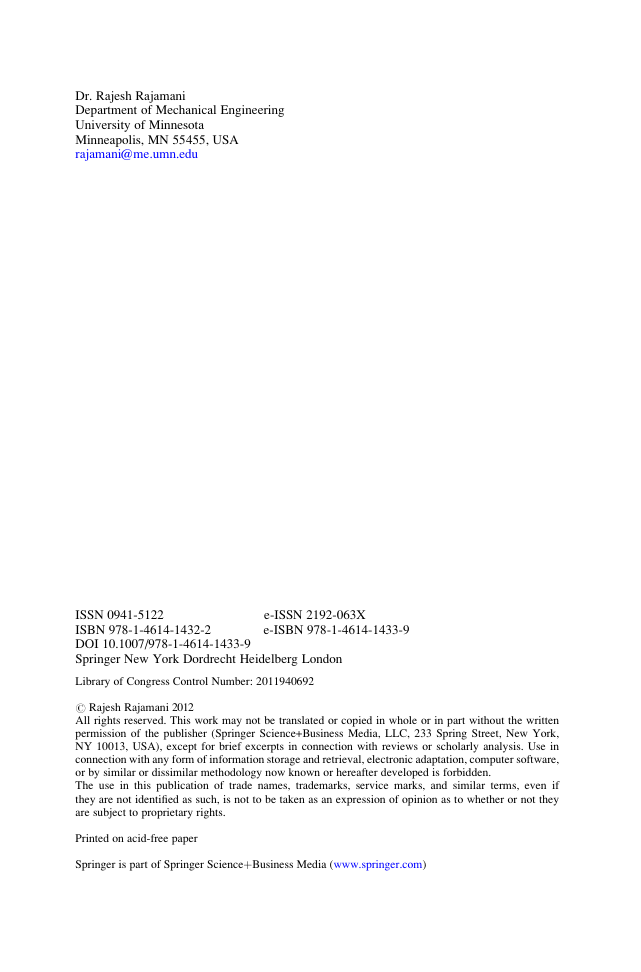


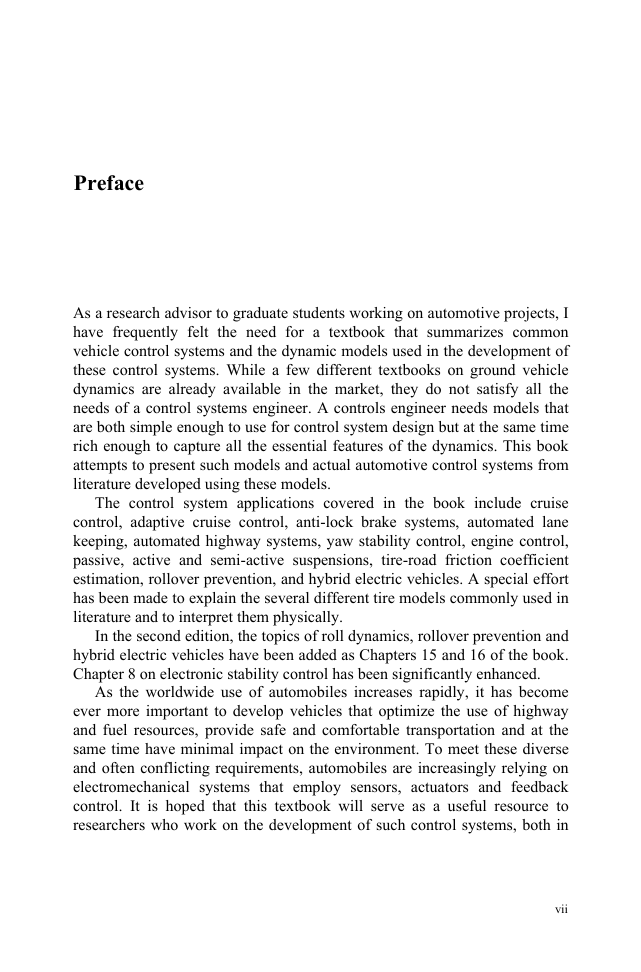








 2023年江西萍乡中考道德与法治真题及答案.doc
2023年江西萍乡中考道德与法治真题及答案.doc 2012年重庆南川中考生物真题及答案.doc
2012年重庆南川中考生物真题及答案.doc 2013年江西师范大学地理学综合及文艺理论基础考研真题.doc
2013年江西师范大学地理学综合及文艺理论基础考研真题.doc 2020年四川甘孜小升初语文真题及答案I卷.doc
2020年四川甘孜小升初语文真题及答案I卷.doc 2020年注册岩土工程师专业基础考试真题及答案.doc
2020年注册岩土工程师专业基础考试真题及答案.doc 2023-2024学年福建省厦门市九年级上学期数学月考试题及答案.doc
2023-2024学年福建省厦门市九年级上学期数学月考试题及答案.doc 2021-2022学年辽宁省沈阳市大东区九年级上学期语文期末试题及答案.doc
2021-2022学年辽宁省沈阳市大东区九年级上学期语文期末试题及答案.doc 2022-2023学年北京东城区初三第一学期物理期末试卷及答案.doc
2022-2023学年北京东城区初三第一学期物理期末试卷及答案.doc 2018上半年江西教师资格初中地理学科知识与教学能力真题及答案.doc
2018上半年江西教师资格初中地理学科知识与教学能力真题及答案.doc 2012年河北国家公务员申论考试真题及答案-省级.doc
2012年河北国家公务员申论考试真题及答案-省级.doc 2020-2021学年江苏省扬州市江都区邵樊片九年级上学期数学第一次质量检测试题及答案.doc
2020-2021学年江苏省扬州市江都区邵樊片九年级上学期数学第一次质量检测试题及答案.doc 2022下半年黑龙江教师资格证中学综合素质真题及答案.doc
2022下半年黑龙江教师资格证中学综合素质真题及答案.doc